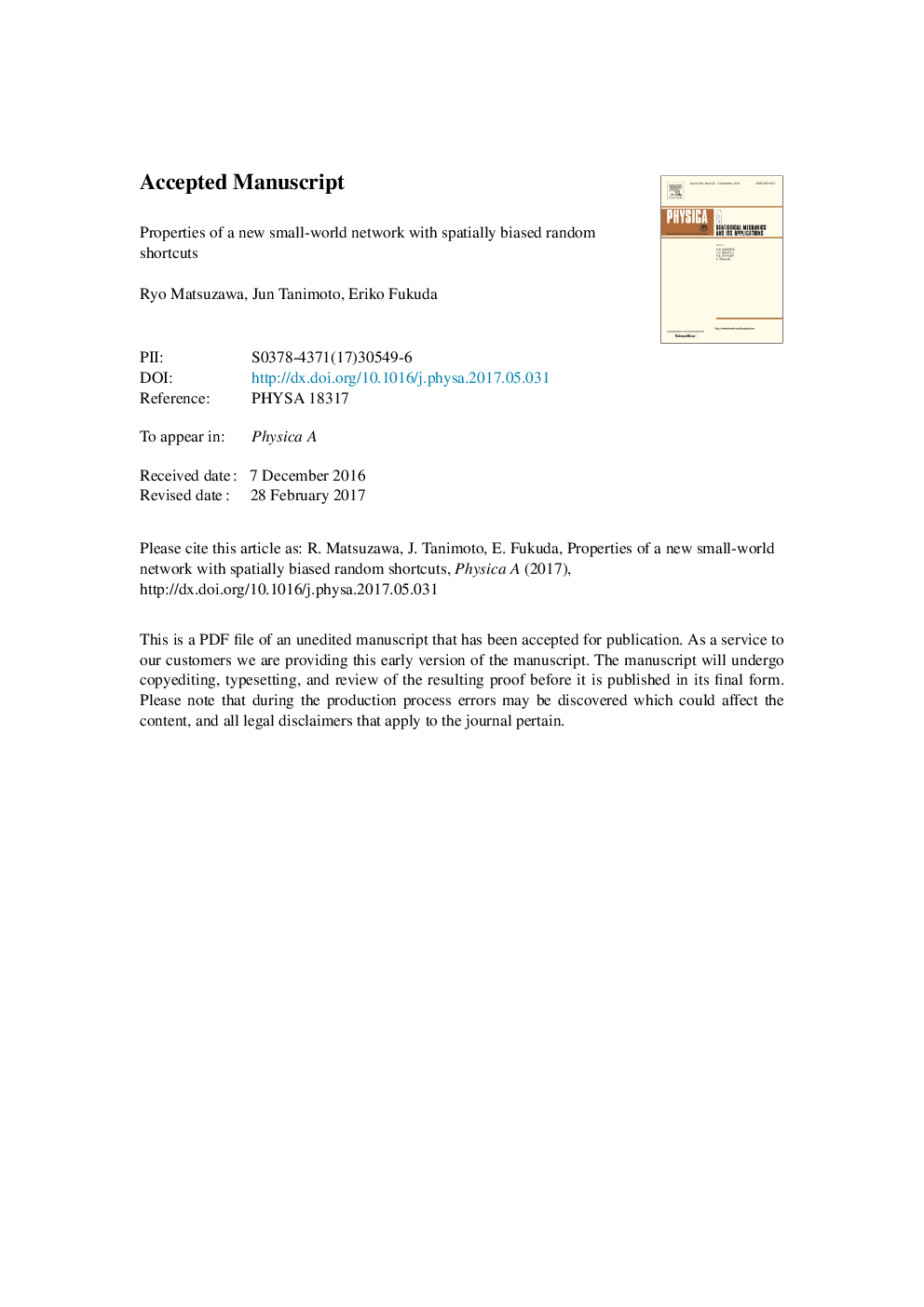| Article ID | Journal | Published Year | Pages | File Type |
|---|---|---|---|---|
| 5102640 | Physica A: Statistical Mechanics and its Applications | 2017 | 16 Pages |
Abstract
This paper introduces a small-world (SW) network with a power-law distance distribution that differs from conventional models in that it uses completely random shortcuts. By incorporating spatial constraints, we analyze the divergence of the proposed model from conventional models in terms of fundamental network properties such as clustering coefficient, average path length, and degree distribution. We find that when the spatial constraint more strongly prohibits a long shortcut, the clustering coefficient is improved and the average path length increases. We also analyze the spatial prisoner's dilemma (SPD) games played on our new SW network in order to understand its dynamical characteristics. Depending on the basis graph, i.e., whether it is a one-dimensional ring or a two-dimensional lattice, and the parameter controlling the prohibition of long-distance shortcuts, the emergent results can vastly differ.
Keywords
Related Topics
Physical Sciences and Engineering
Mathematics
Mathematical Physics
Authors
Ryo Matsuzawa, Jun Tanimoto, Eriko Fukuda,
